Growing Made Simple
Welcome to your guide to all things hydroponic. Whether you’re just planting your first seed or exploring advanced techniques, this is your space to learn, grow, and feel confident every step of the way.
From understanding how hydroponics works to dialing in your lighting, nutrients, and care routine—everything here is designed to help you grow with ease. No overwhelming technical jargon. No confusing instructions. No guesswork. Just clear, calming guidance rooted in nature and backed by experience.
Because the more you know, the more joy you’ll grow.
Grow & Harvest at Home: Bell Pepper Flowers, Lettuce Varieties, Hydroponic Strawberries, Stevia Care & Basil Harvesting Tips

1) Introduction to Hydroponics

Hydroponics is a method of growing plants without soil, using nutrient-rich water solutions. This technique uses 90% less water and requires 80% less space compared to traditional soil-based gardening. By providing nutrients directly to the roots, hydroponics promotes growth that is up to 50% faster, leading to higher yields.
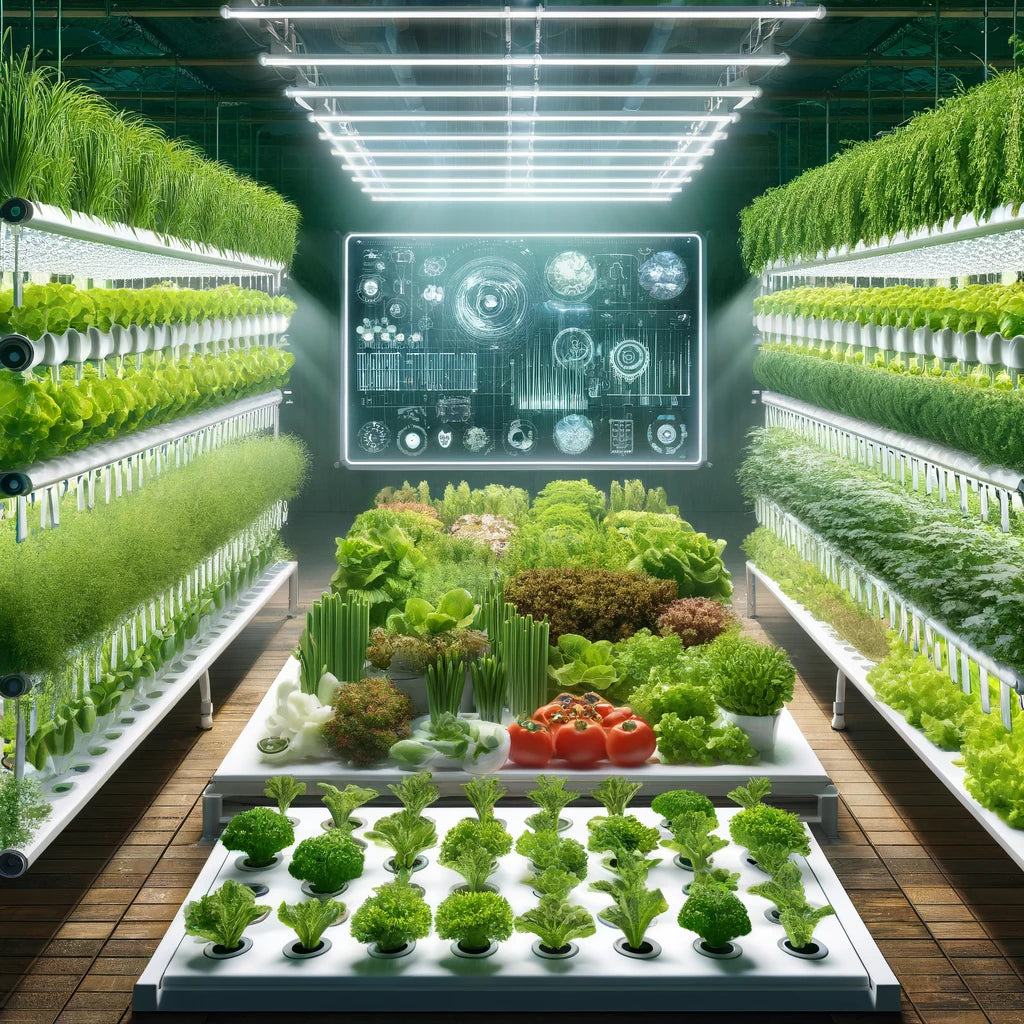
Benefits of Hydroponic Farming
Hydroponic farming offers significant advantages such as faster plant growth, higher yields, and the ability to grow in limited spaces without soil. It is highly water-efficient, recycles water within the system, and facilitates year-round farming in controlled environments. Hydroponics also reduces the risk of soil-borne diseases and eliminates the need for weeding, making it a cleaner and more sustainable option.
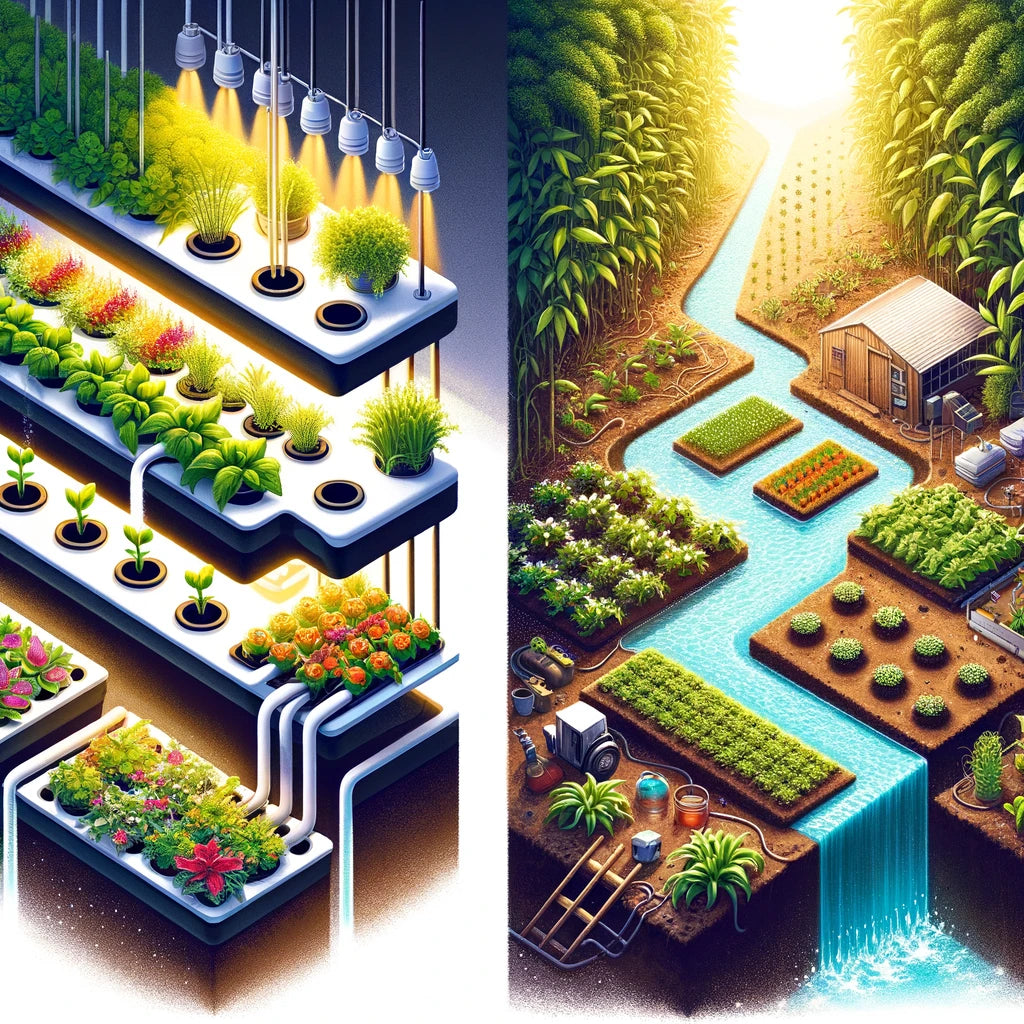
Hydroponics Vs. Traditional Soil Gardening
Hydroponics allows for greater control over nutrient balance, resulting in efficient nutrient use and faster plant growth. Traditional soil gardening can be affected by variable soil quality and environmental conditions, and typically requires more space and labor, including tilling, weeding, and pest management. These challenges are eliminated in hydroponic setups, highlighting its efficiency and cleanliness.
1 of 4
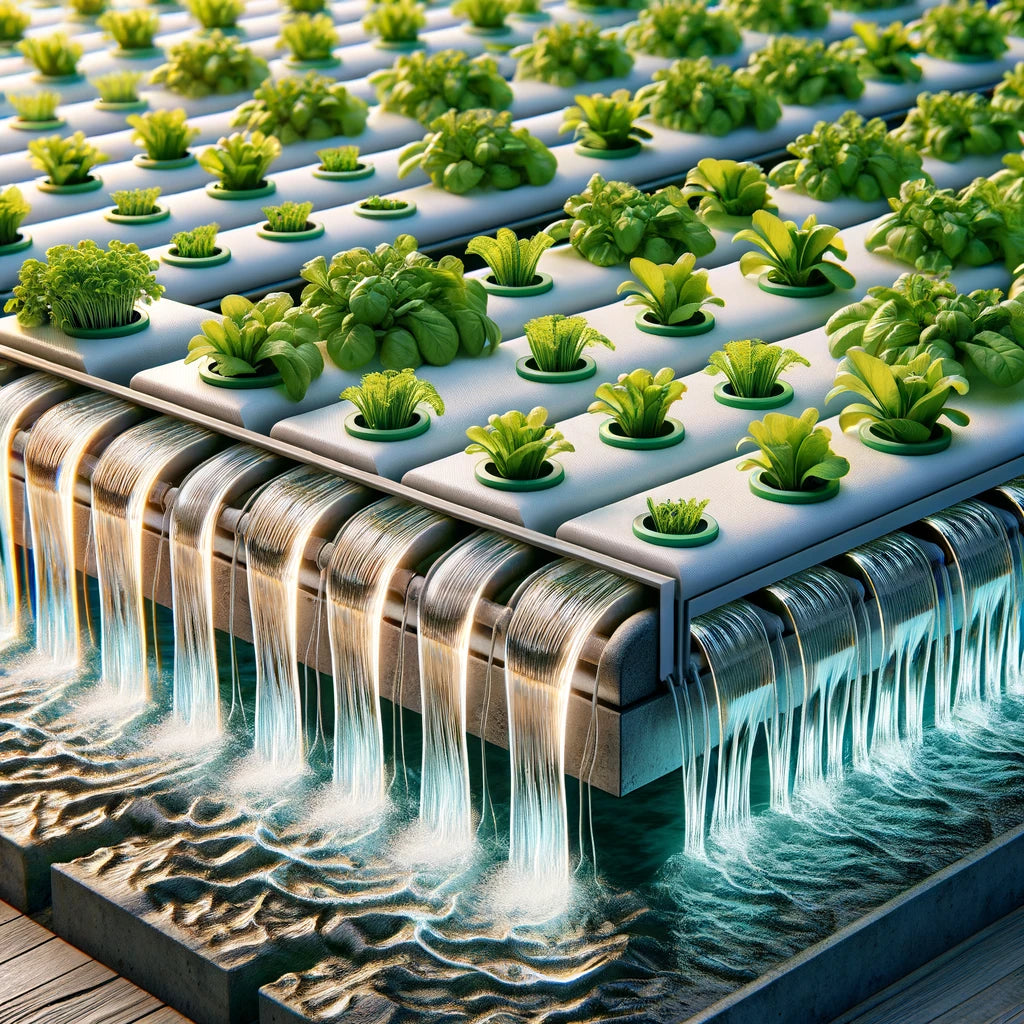
2) Types of Hydroponic Systems
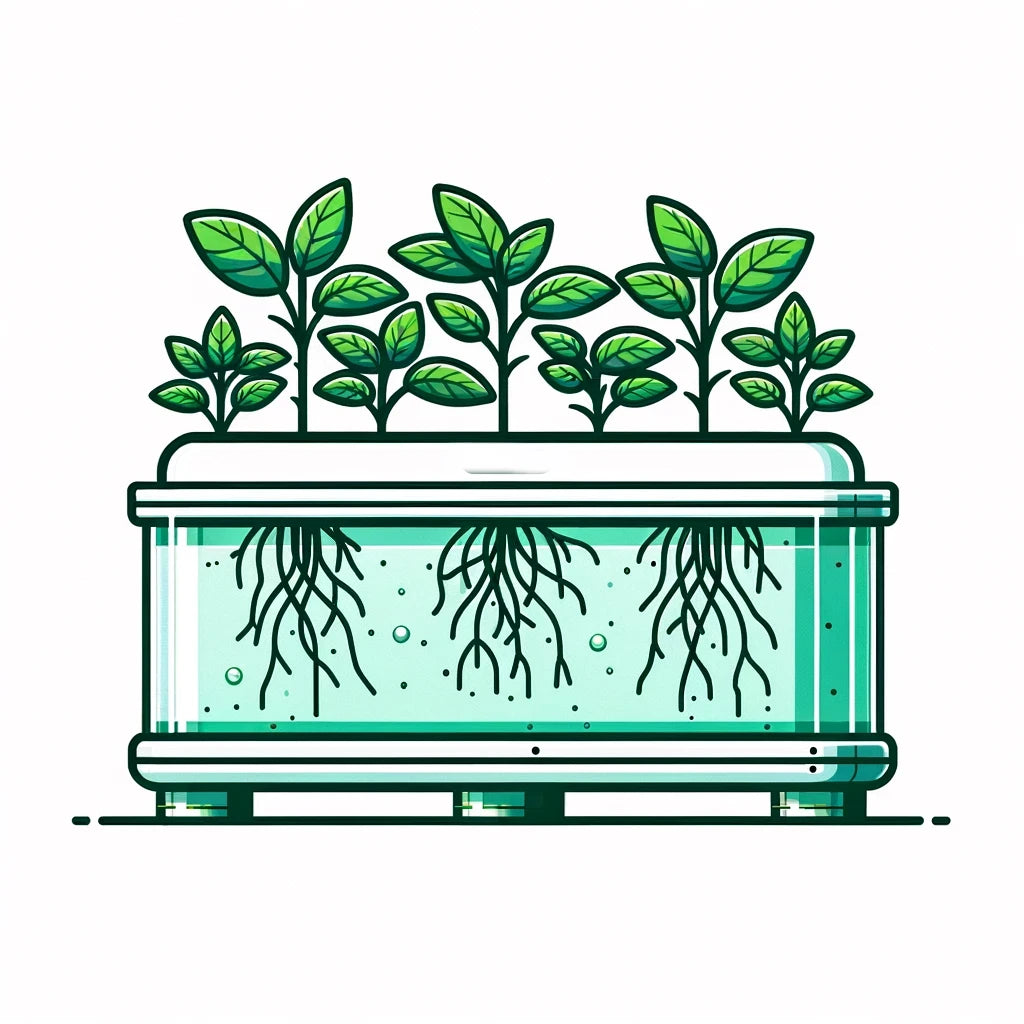
Kratky Method
The Kratky Method is a passive hydroponic system that does not require electricity or water pumps. In this system, plants are suspended with their roots partially submerged in a nutrient solution. As the plants consume the nutrients, the water level drops, exposing more of the root system to air. This process provides the roots with an optimal balance of water, nutrients, and oxygen without the need for active aeration. The Kratky Method is incredibly low-maintenance and ideal for beginners or those looking for a cost-effective way to experiment with hydroponics. It’s particularly well-suited for growing leafy greens and herbs.
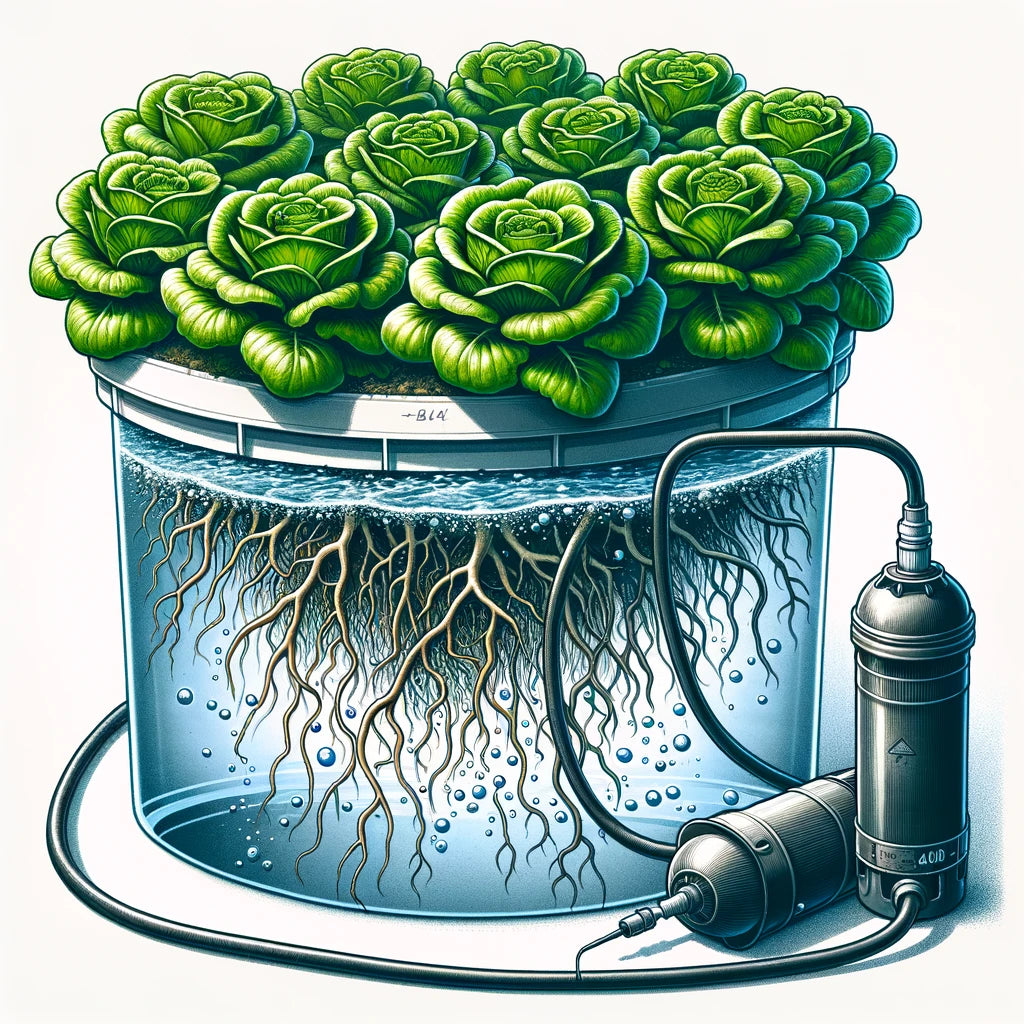
Deep Water Culture (DWC)
(Aquager Hydroponic Home Farms)
Deep Water Culture involves suspending plants in a nutrient solution with their roots submerged. An air pump oxygenates the water, promoting rapid root growth. DWC is simple to set up and great for beginners.

Nutrient Film Technique (NFT)
In the Nutrient Film Technique, a continuous flow of nutrient solution runs over the roots of plants that are housed in channels. Since the roots are not submerged, it allows for excellent oxygen exposure and nutrient absorption, making it ideal for growing greens like lettuce.
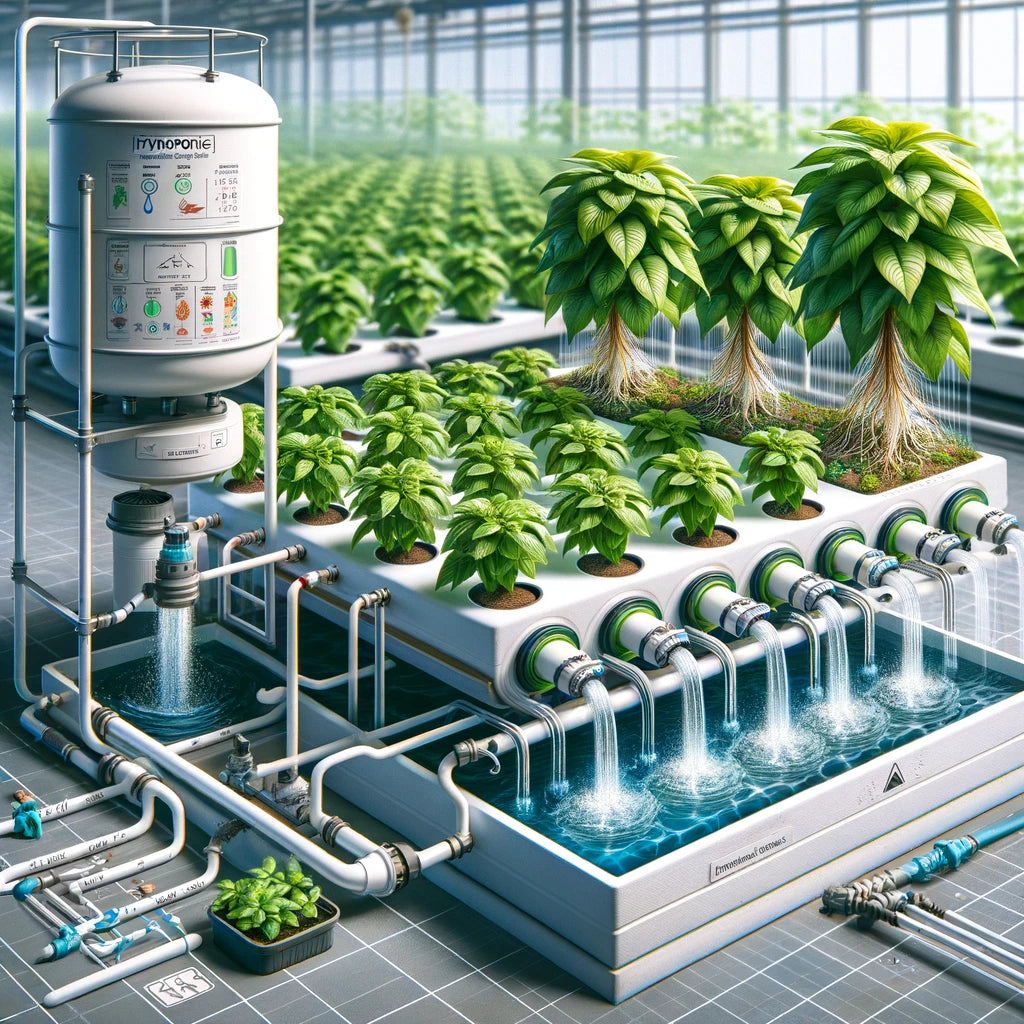
Flood and Drain
The Flood and Drain system works by flooding the grow tray with nutrient solution at intervals, which then drains back into the reservoir. This method is versatile, suitable for a variety of plant sizes, and excellent for water conservation.
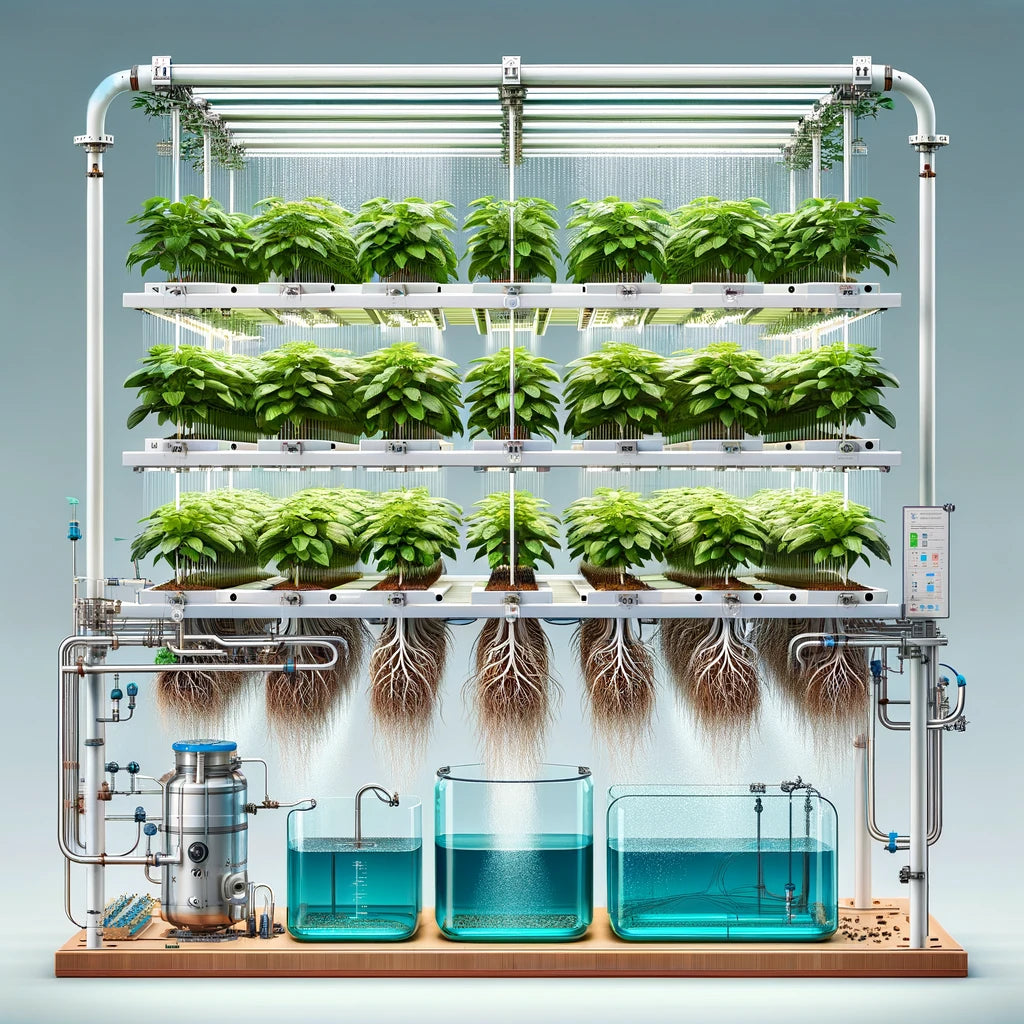
Aeroponics
Aeroponics is a high-tech method where roots hang in the air and are misted with nutrient solution. This maximizes oxygen exposure and nutrient uptake, leading to high growth rates. Aeroponics requires more precise control and monitoring but offers exceptional yield and quality.
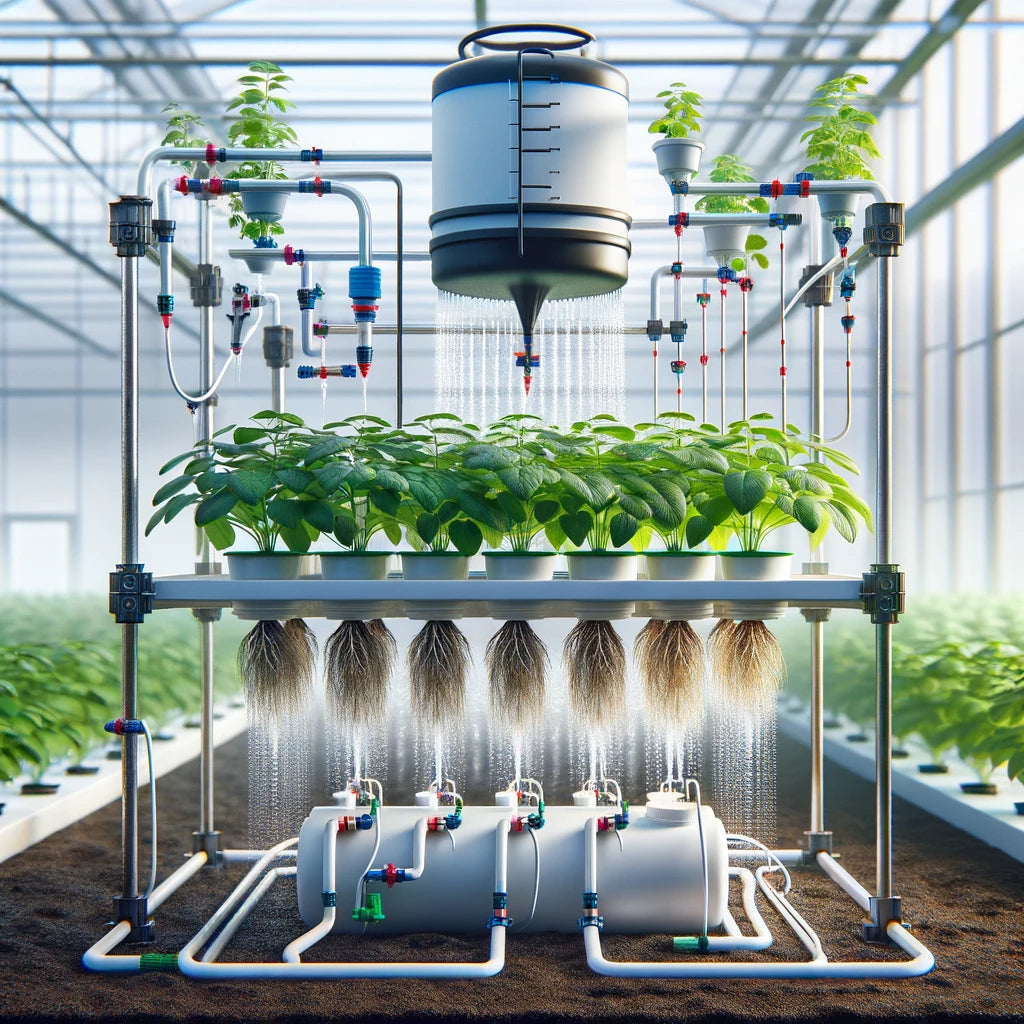
Drip Systems
Drip Systems deliver nutrient solution to the base of each plant through a small drip line. This system can be highly efficient and customizable, making it perfect for larger or more diverse gardens.
1 of 7
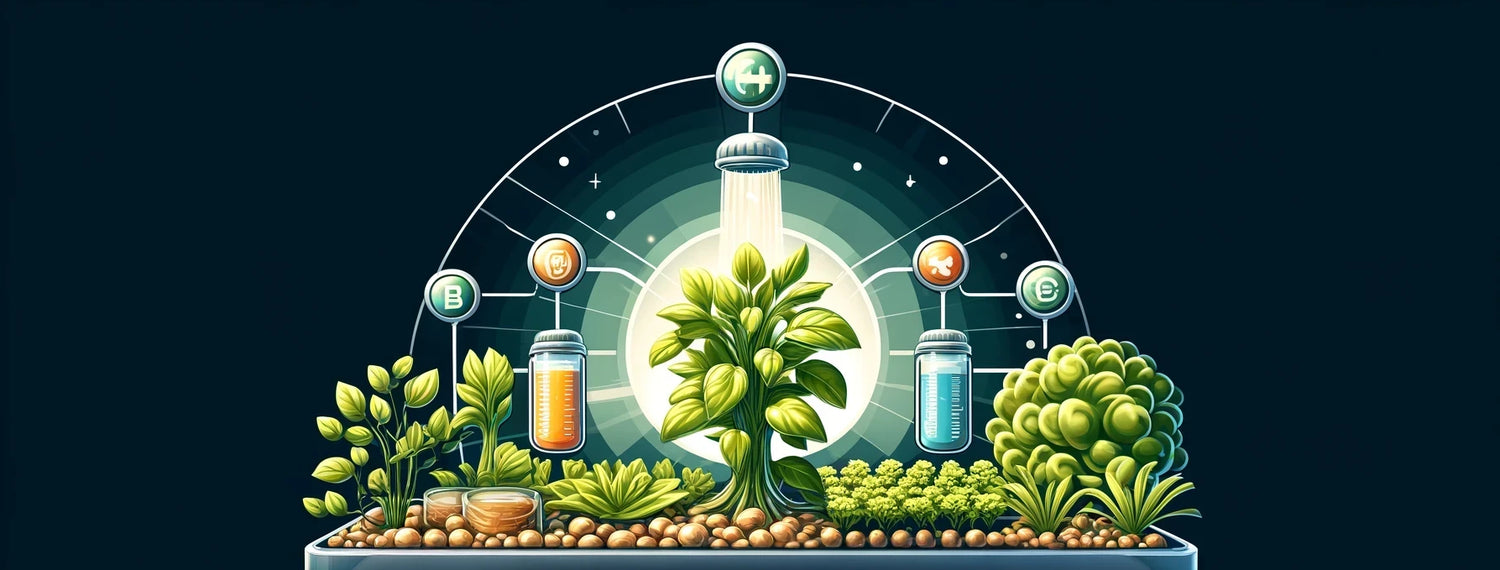
3) Nutrients and Solution
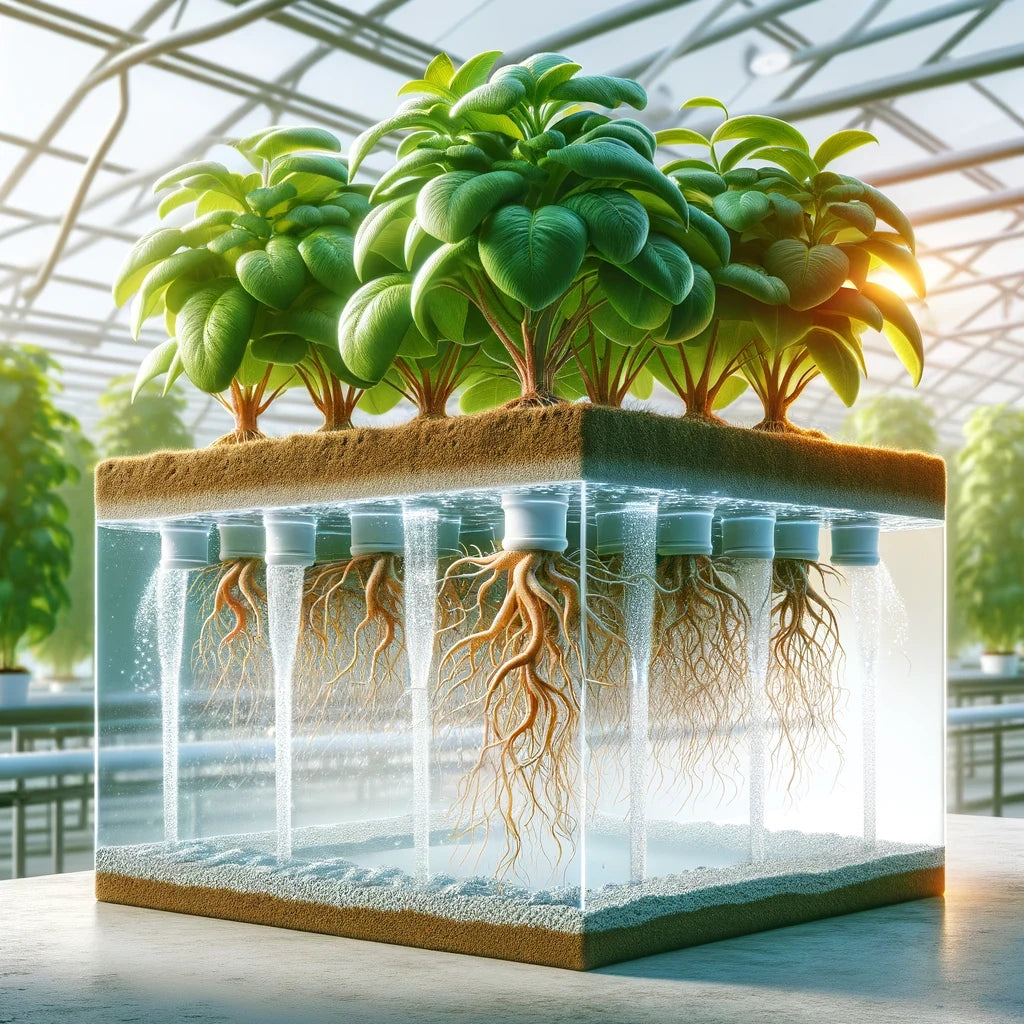
Understanding Hydroponic Nutrients
Hydroponic systems do not use soil and deliver nutrients directly to plant roots in a water-based solution. This solution contains all essential minerals like nitrogen, potassium, and phosphorus in forms easily absorbed by plants.
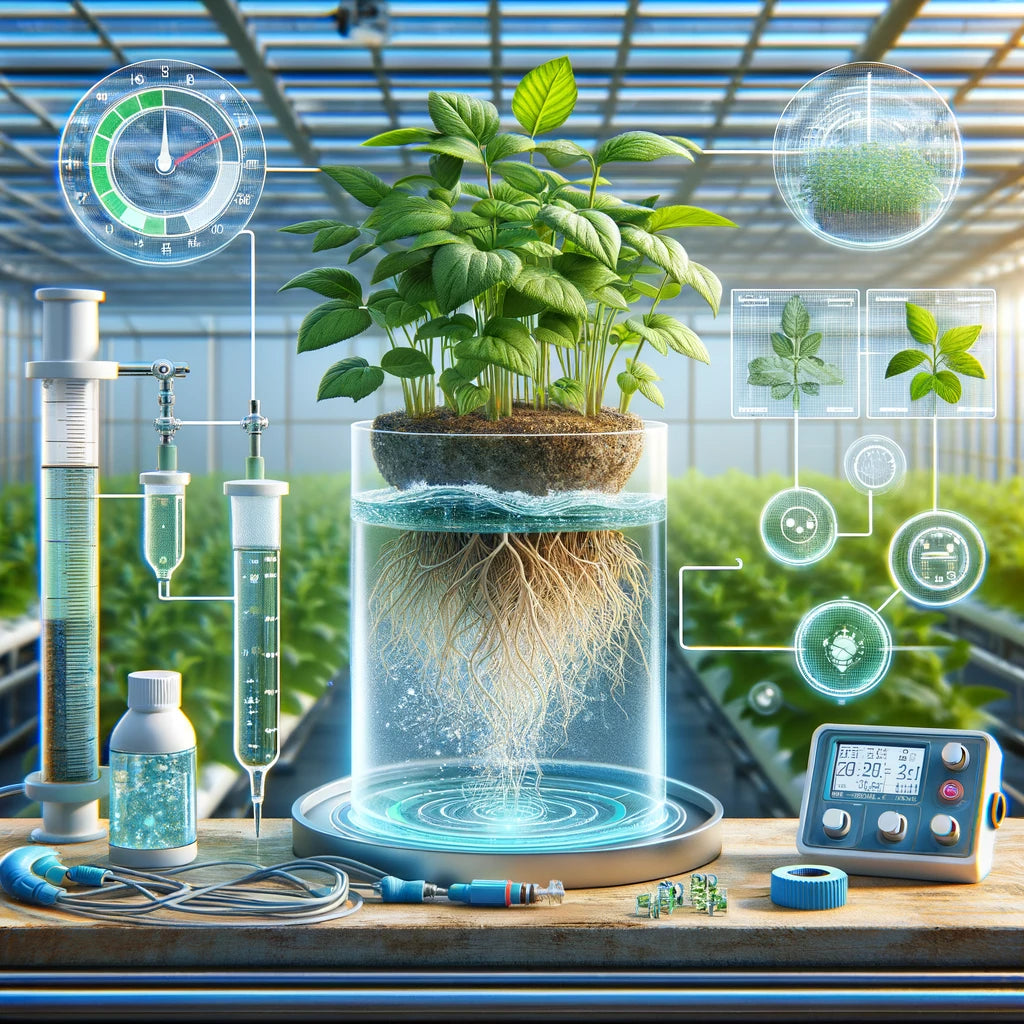
How to Mix and Manage Nutrient Solutions
Accurate mixing of hydroponic nutrients ensures that plants receive the optimal balance required for growth. Regular monitoring and adjustment of the solution's pH and EC (PPM) levels are crucial for maintaining nutrient availability and preventing toxicity.
Aquager Hydroponic Home Farms:
- After a water change, add 15 ml of nutrient solution using the measuring cup.
- If PPM drops below 200, add 15 ml of nutrient solution.
- Check the pH and adjust it to 5.5 - 6.5.
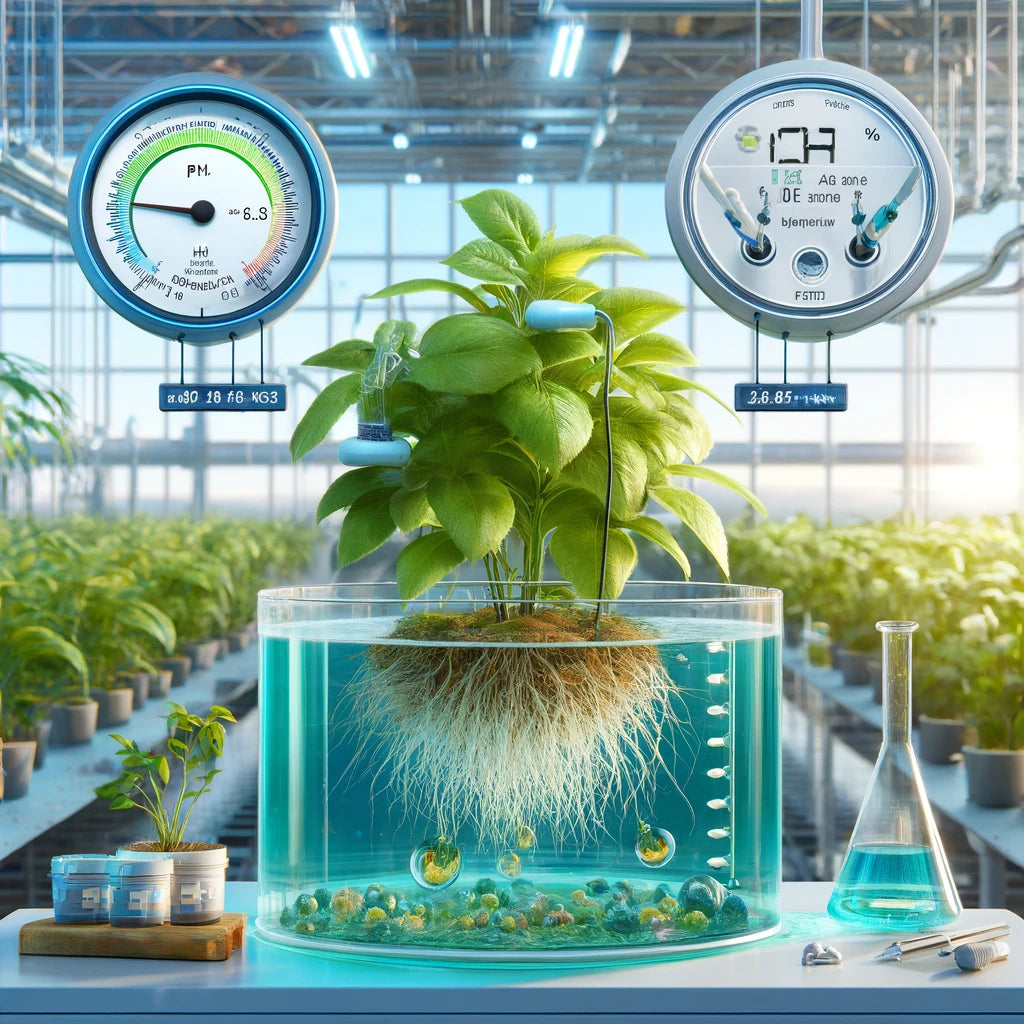
Nutrient Film Technique (NFT)
In the Nutrient Film Technique, a continuous flow of nutrient solution runs over the roots of plants that are housed in channels. Since the roots are not submerged, it allows for excellent oxygen exposure and nutrient absorption, making it ideal for growing greens like lettuce.

pH and EC Levels: Why They Matter
The pH level of the nutrient solution affects the solubility of minerals and their uptake by plants, making it vital to maintain it within a range of 5.5 to 6.5. Electrical Conductivity (EC), also known as Particles Per Million (PPM), measures the salt concentration in the solution, indicating the total amount of nutrients present and helping to avoid over or underfeeding (Recommended: MIN 200- MAX 900 PPM).
1 of 5
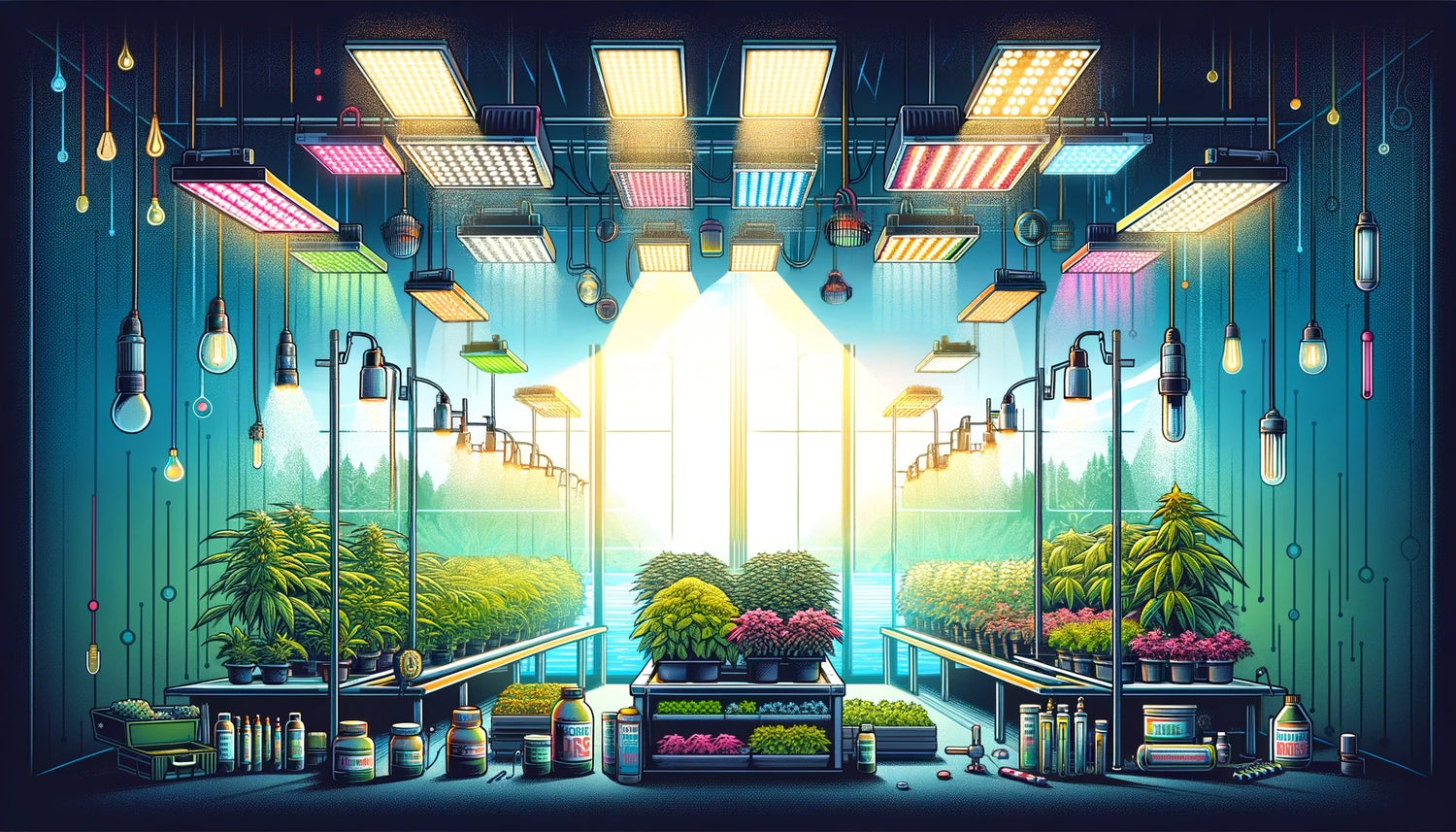
4) Lighting Solutions
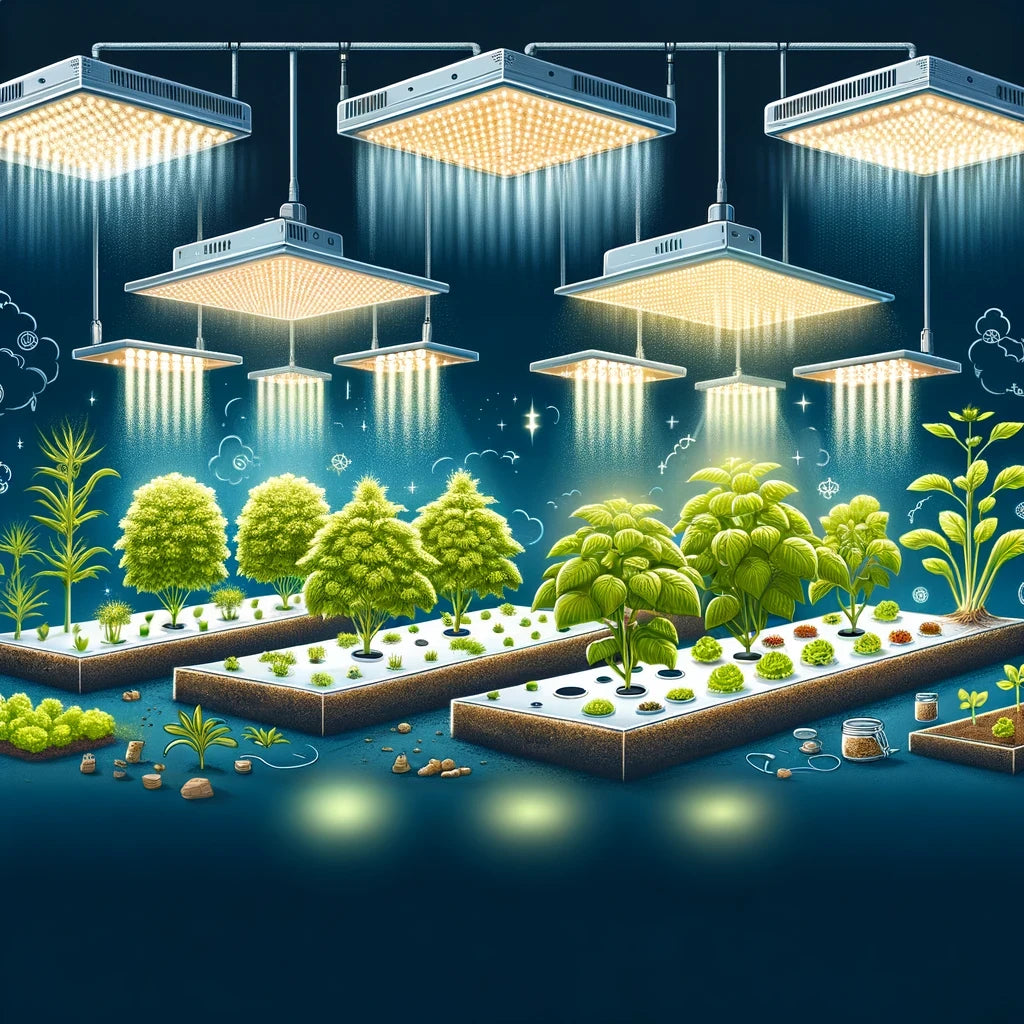
Types of Grow Lights
There are various grow light options: LED, HID, and Fluorescent, each with pros and cons. LEDs are energy-efficient and produce less heat, but have a higher upfront cost. HIDs are powerful for large setups, but generate heat and use more energy. Fluorescents are great for seedlings and small plants, but their lower intensity limits use for mature plants.
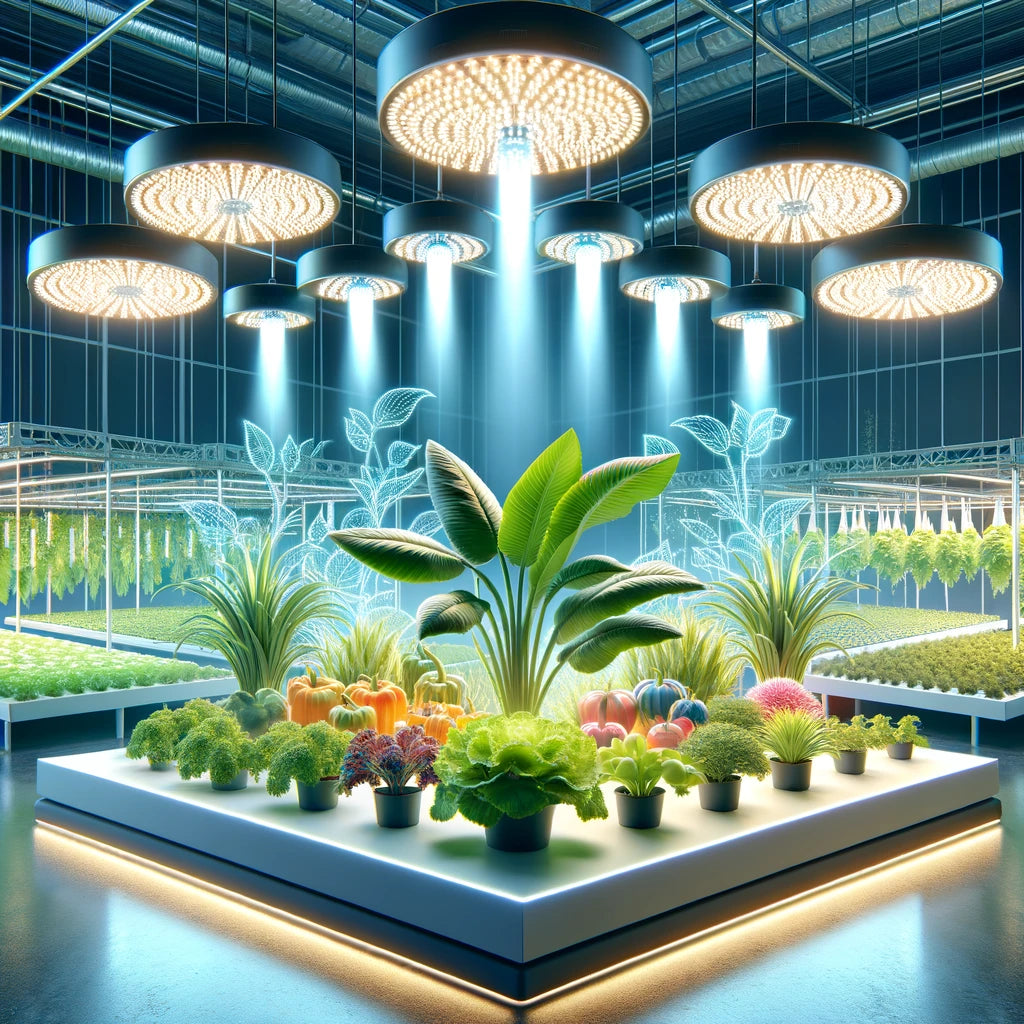
Determining the Right Light for Your Setup
Selecting the right type and intensity of light is crucial and should match the specific needs of your plants. For seedlings or small plants, Fluorescent lights are a great choice due to their gentle light. For mature plants or larger setups, HID lights provide the intensity required, but ensure proper ventilation to manage heat. For energy efficiency and versatility across all stages, LED lights are highly recommended. Always consider the plant's light absorption spectrum and growth stage to optimize your setup for maximum health and yield.
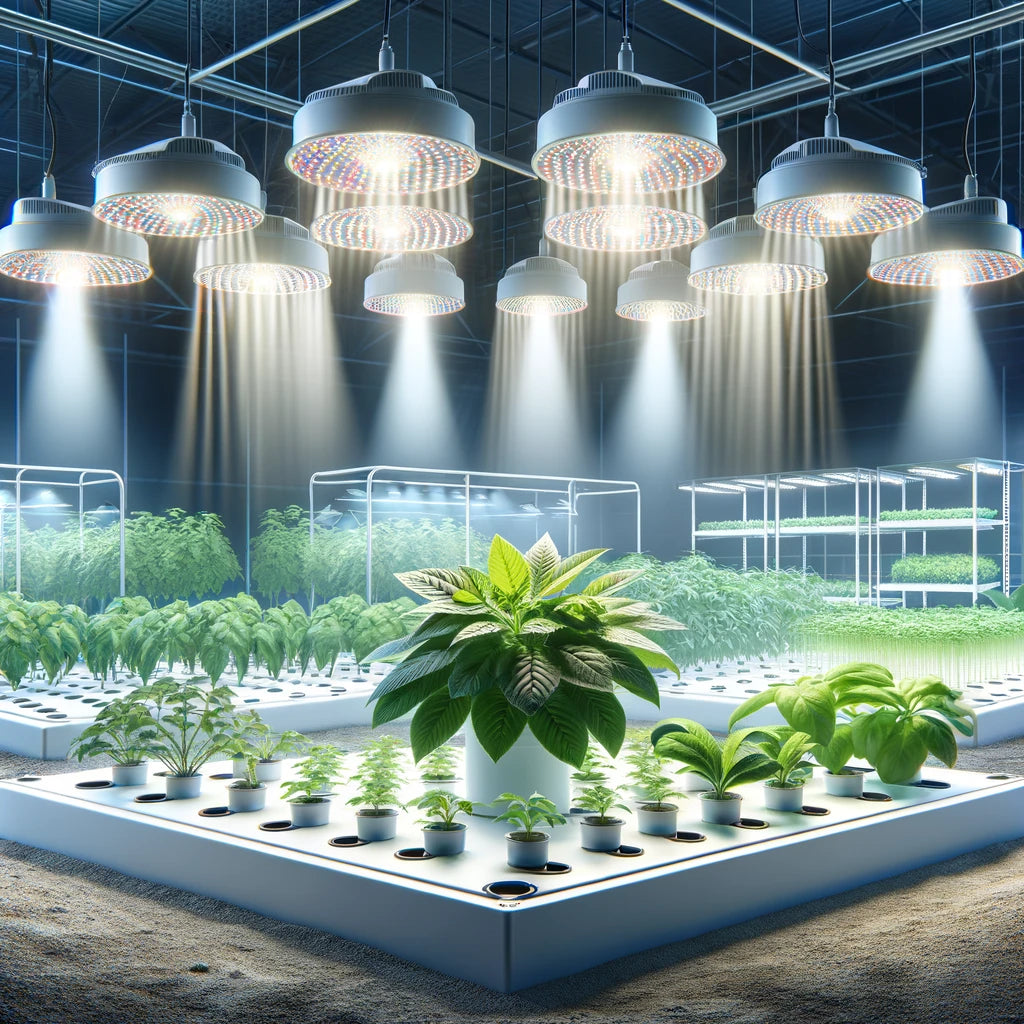
Light Schedules for Optimal Growth
Implement light schedules that mimic natural daylight patterns to support healthy plant growth and development. Adjusting the duration and intensity of light exposure according to plant species and growth phases can significantly enhance photosynthesis and productivity. Starting rule is 16h lights on and 8h lights off. This schedule is also used in our Aquager Hydroponic Home Farms.
1 of 4
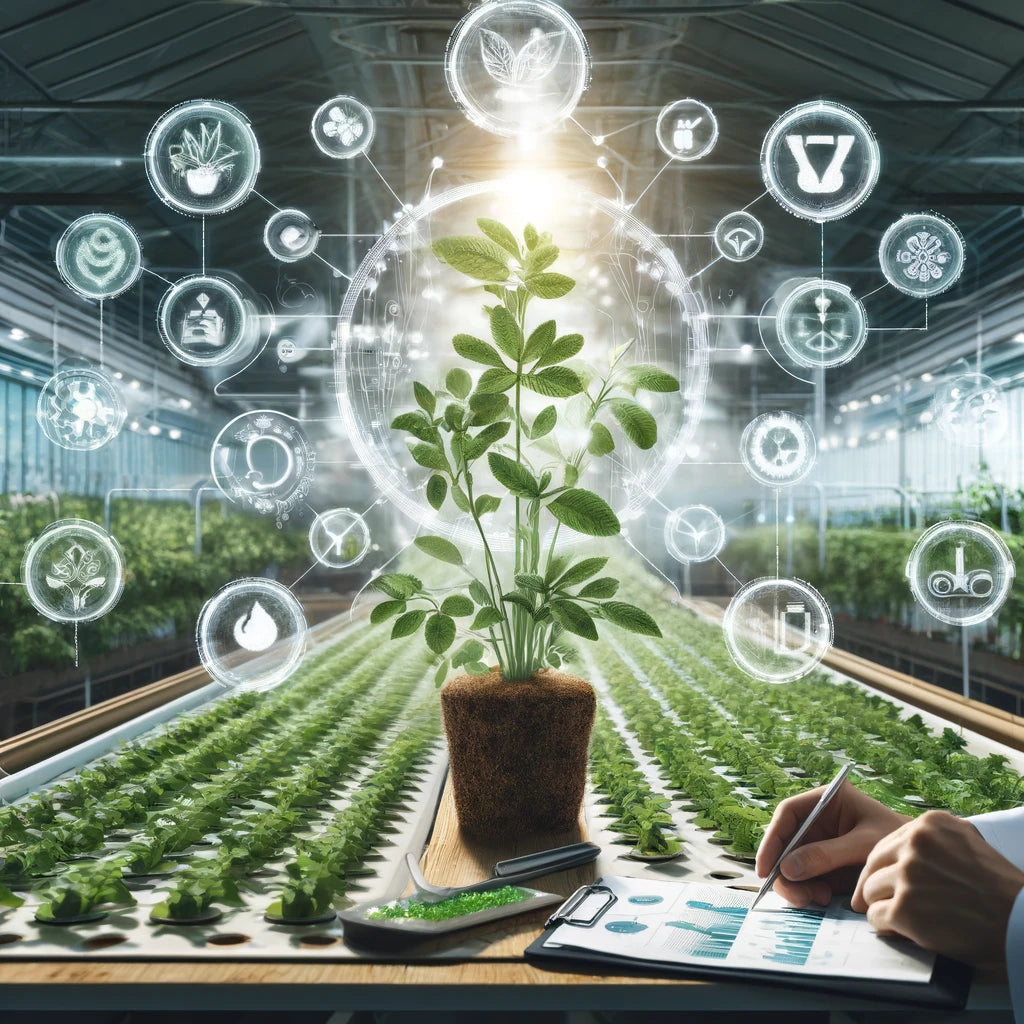
5) Plant Care and Maintenance
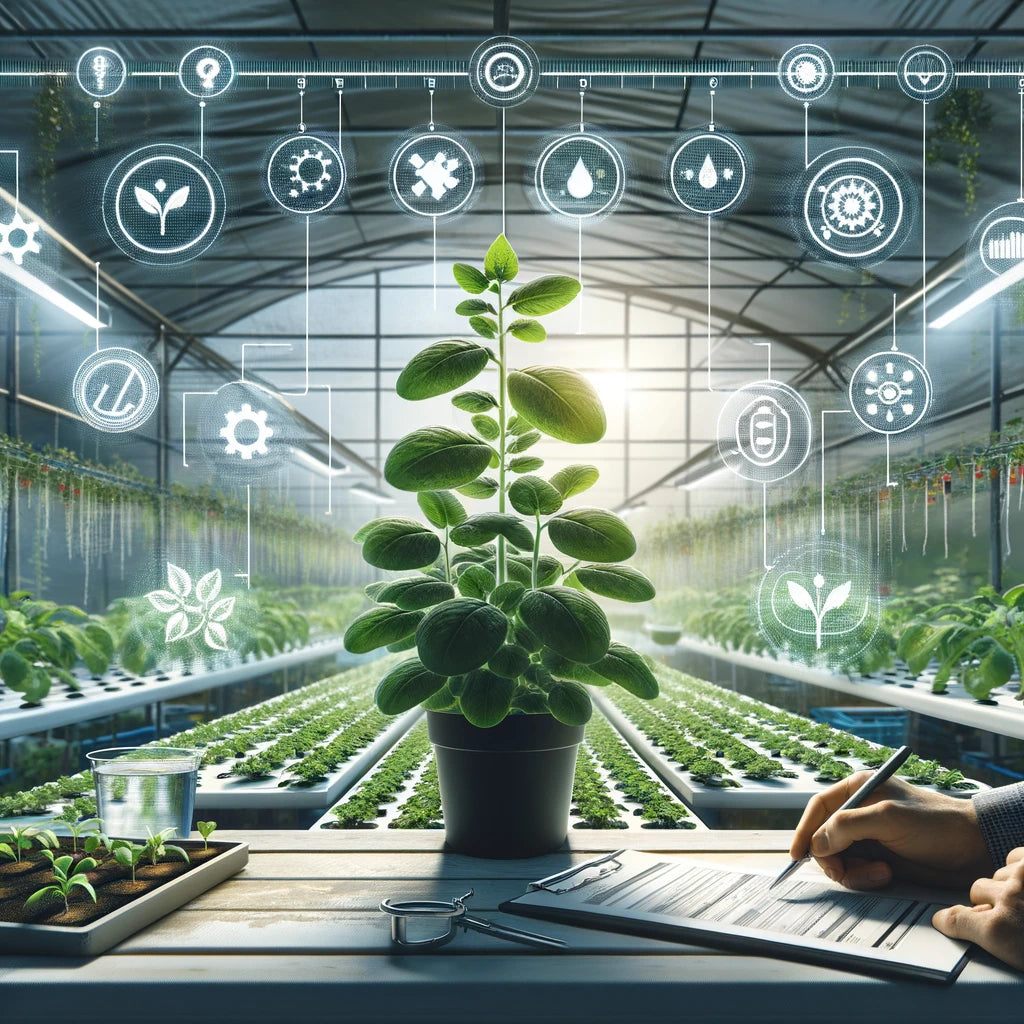
Weekly Maintenance Routines
Set up a consistent weekly maintenance routine to keep your system running smoothly and plants thriving. Check the nutrient levels and adjust them as needed, for example, if you notice yellowing leaves, it could indicate a nutrient imbalance. Test the pH twice per week and ensure it stays between 5.5 and 6.5; for instance, if it drops below 5.5, add a pH Up to correct it. Trim daily large plants and dead leaves.
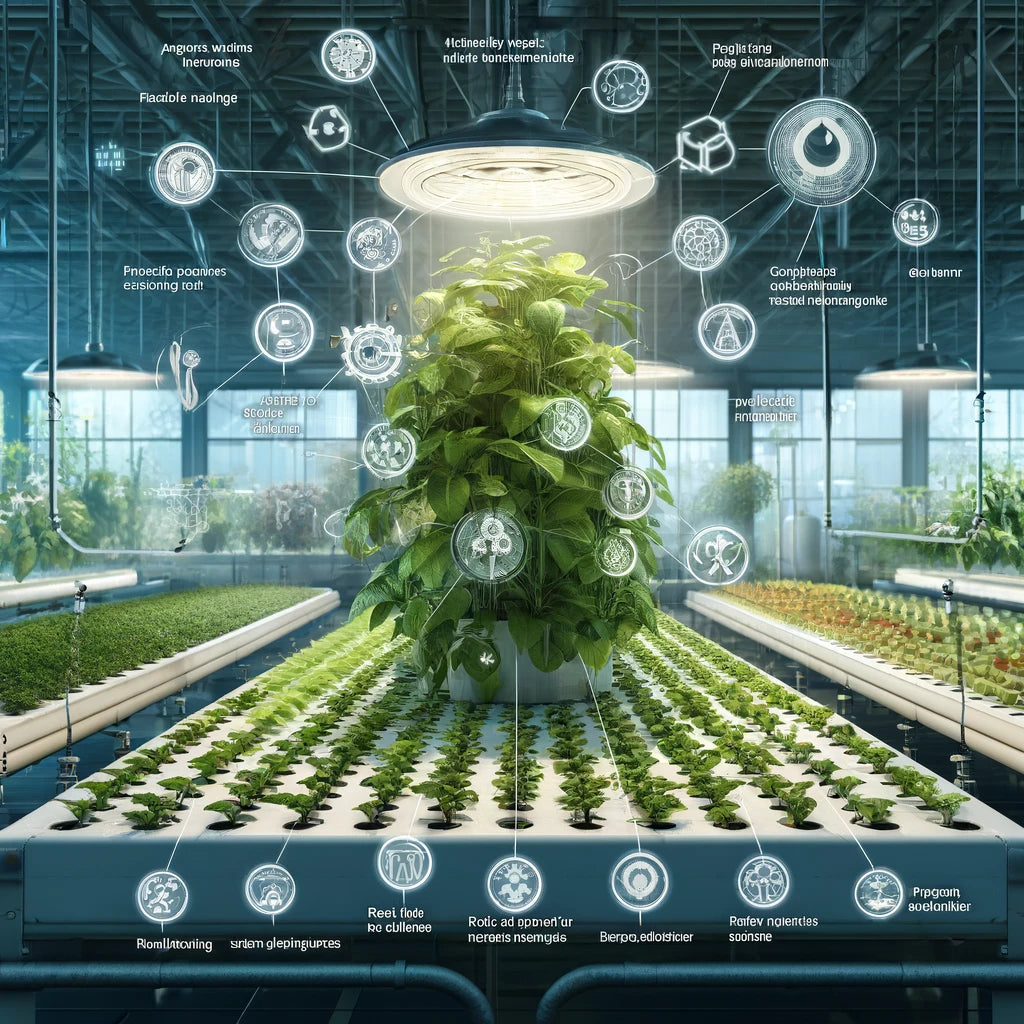
Managing Pests and Diseases in Hydroponics
Identify common pests and diseases that can affect hydroponic systems. Inspect roots weekly; if they appear brown and slimy, treat for root rot by increasing oxygenation and trim the affected roots. Check leaves regularly for white patches (signs of powdery mildew) and remove infected parts while increasing air circulation. Look for tiny insects like aphids on stems and leaves and apply biological controls like ladybugs or a safe insecticidal soap as needed. Maintain system cleanliness by sanitizing tools and surfaces to prevent outbreaks.
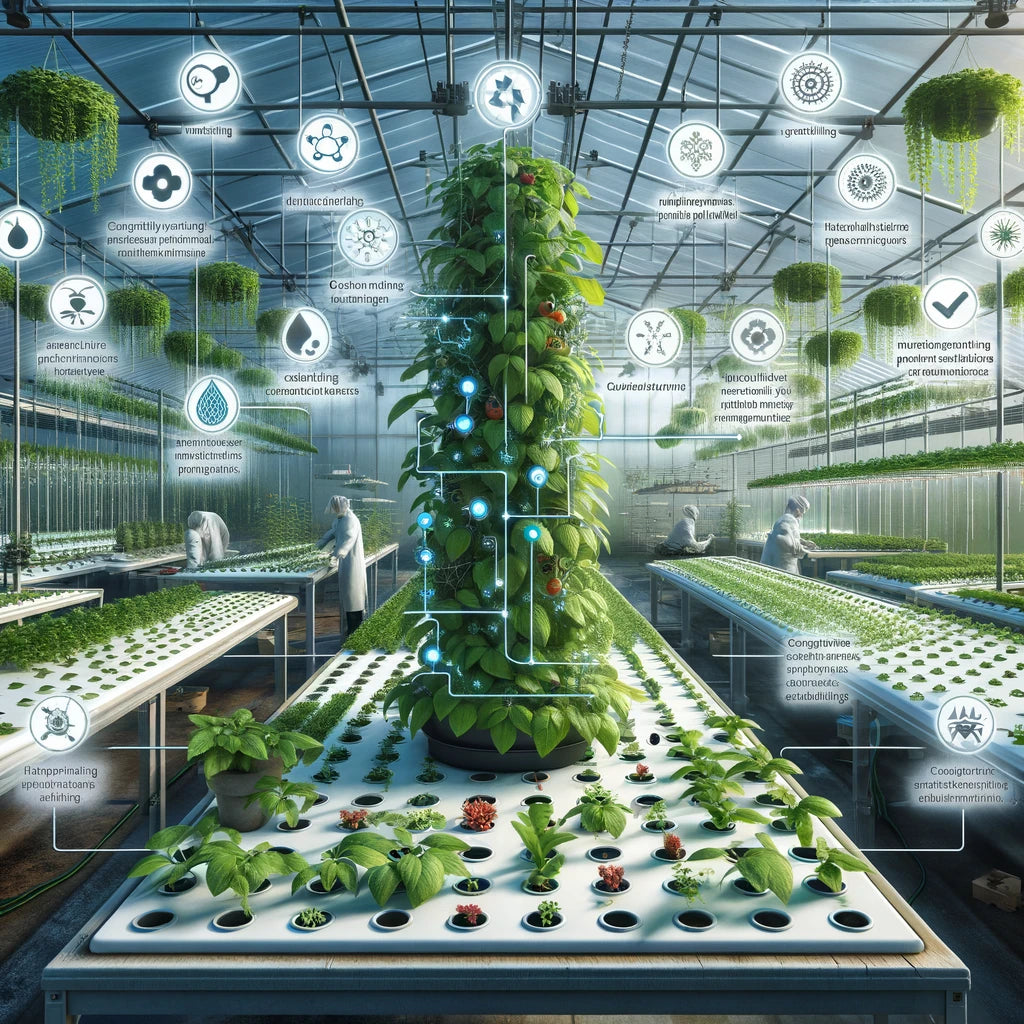
Pruning and Training Plants for Better Yields
Prune your plants regularly to manage their size, improve air circulation, and reduce the risk of disease. Remove yellowing or overcrowded leaves to keep the plant healthy. Use training techniques like trellising to guide vines or branches, ensuring even light exposure. For instance, gently tie tomato stems to a trellis to support their weight and encourage a higher yield. Combine pruning and training to shape your plants for maximum productivity and a more fruitful harvest.
1 of 4

6) Troubleshooting Common Problems

Nutrient Deficiencies
Watch for signs of nutrient deficiencies in your plants and take action quickly. For example, yellowing leaves often indicate a nitrogen deficiency—add a nitrogen-rich nutrient solution to correct it. If you notice stunted growth, it could be a phosphorus deficiency—adjust your solution with a phosphorus supplement. Check your plants regularly and modify the nutrient levels as needed to keep them healthy and productive. Timely intervention prevents plant stress and helps maintain strong yields.

Water and Airflow Issues
Maintain optimal water circulation and aeration to support healthy root growth and prevent waterborne pathogens. Check air pumps weekly for clogs and clear any debris from the tank. For example, if water appears stagnant, inspect the air pump immediately. Use an air pump with air stones to provide sufficient oxygen; if roots are turning brown, increase aeration to prevent root rot. Regularly inspect your equipment!

Mold and Algae Growth
Cover unused grow cups and spaces with cup covers to stop algae from growing in the water tank. Algae on grow mediums is harmless, but if mold appears, scrape it off and apply a few drops of food-grade hydrogen peroxide. Regular cleaning of your system and grow area helps prevent future problems.
1 of 4

7) Advanced Techniques and Tips

Yield and Growth Speed
Maximize your hydroponic system’s productivity by fine-tuning nutrient concentrations and optimizing light exposure. Adjust nutrient formulas based on plant needs, for example, increasing nitrogen for leafy greens. Increase light intensity or duration gradually to promote robust growth and higher yields. Regular adjustments ensure your plants thrive and your harvests improve.
1 of 2
